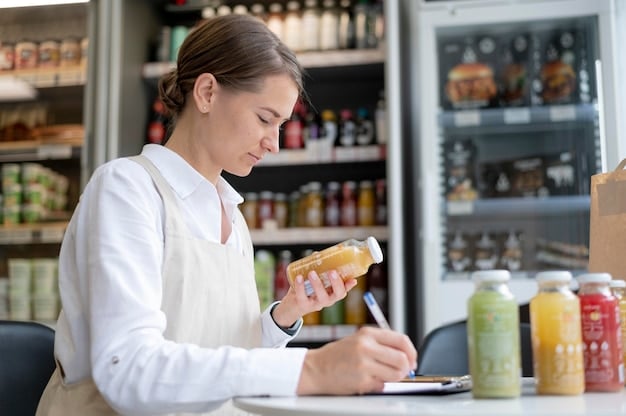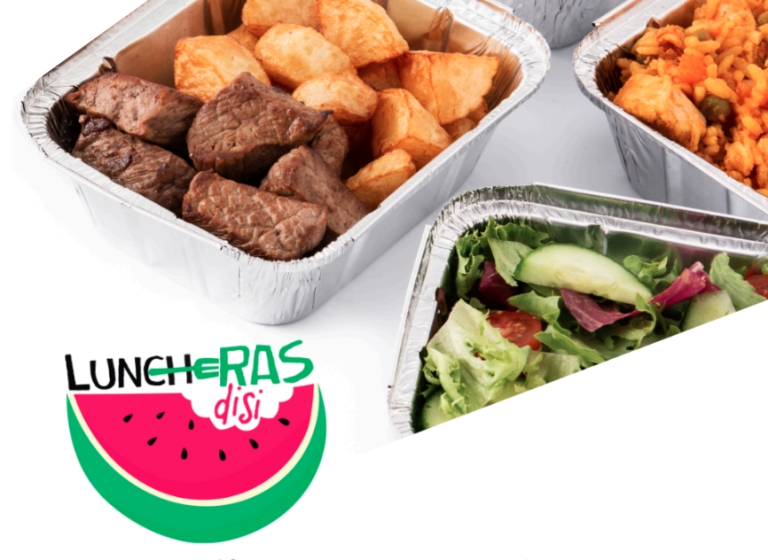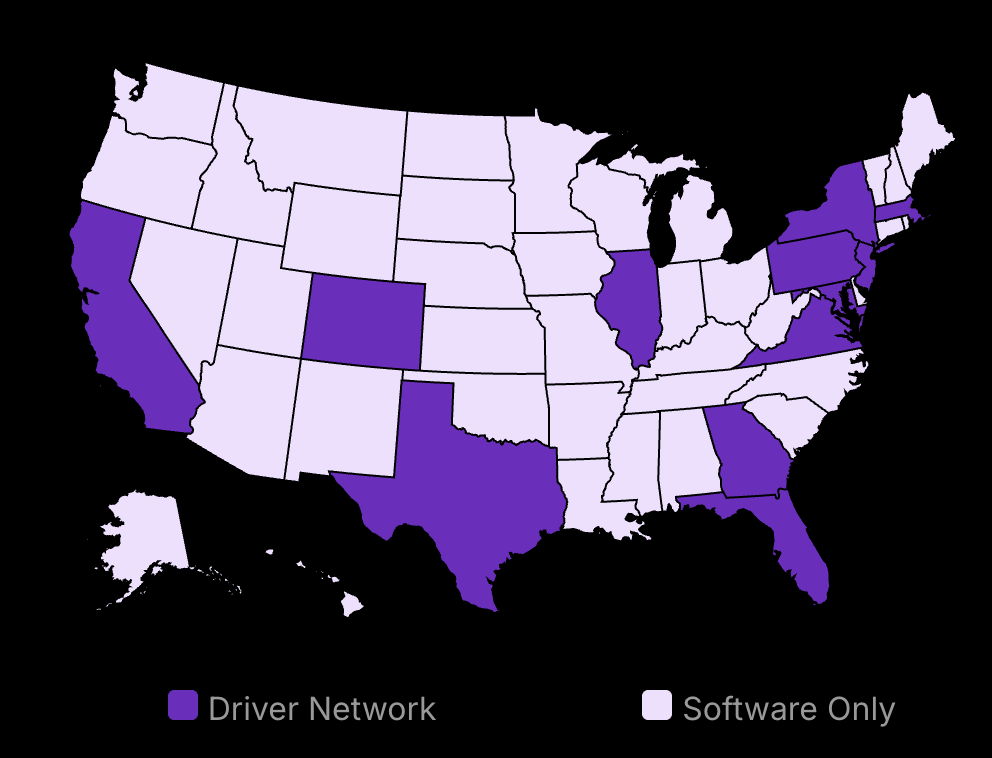Starting a foodstuff business isn’t just about selling food products—it’s about feeding your community while feeding your bank account. In 2025, the local food industry presents remarkable opportunities for entrepreneurs willing to roll up their sleeves and get their hands dirty in flour, spices, or whatever ingredients fuel their passion. This is a huge market, and understanding it is key. For those embarking on this journey, gaining insight into successful practices can be a game changer. Exploring strategies for building a successful food entrepreneurship can provide valuable guidance and inspiration. This knowledge empowers new food business owners to navigate challenges effectively and maximize their growth potential.
Global Food Service Market Size: The global food service market size was worth USD 3,486.58 billion in 2024.
The difference between successful businesses and those that fail? We know many restaurants fail within a few years. It’s not luck or connections—but preparation, knowledge, and strategic planning – in other words, a solid business plan. The food business is demanding.
The statistics speak for themselves: small food businesses that conduct proper market research before launch are more likely to survive past their first year. Yet most new food entrepreneurs skip this critical step, rushing headlong into a market they don’t fully understand. They lack a deeper understanding. Many start-ups face this issue.
Business Survival Rate: Approximately 80% of new businesses survive the first 12 months, with survival rates tapering to 50% by the fifth year.
Have you calculated exactly how much it will cost to get your first specific product on a store shelf? Do you know which permits you need (food safety regulations and safety codes) before you can sell a single cookie or sauce bottle? Can you name your three biggest local competitors right now? Do you know the factors that will make your business stand out? And are you set with the resources to focus on your target customers?
Is there enough room in the marketplace?
If you answered “no” to any of these questions, you’re not alone—but you’re also not ready to launch.
This guide walks you through every step of creating a profitable food business specifically tailored to your local market. From calculating start-up costs to navigating the maze of health regulations (food safety regulations), from analyzing your competitors to optimizing your supply chain and kitchen appliances. We’ll even touch on effective advertising to reach your customers. We consider other factors too.
The food industry isn’t forgiving of mistakes, but it’s incredibly rewarding for those who do their homework. By the time you finish reading, you’ll have a clear roadmap to turn your culinary passion into a sustainable, profitable business that serves your community and supports your financial goals. You’ll have a better handle on choosing the right type of food and crafting a unique brand.
Even if you are online and do not have dining areas, many things stay the same.
Food Service Market Growth Projection: The global food service market is projected to reach a valuation of USD 4.2 trillion by 2028, growing at a CAGR of 5.1% from 2021 to 2028.
Are you ready to build a food business that lasts? Perhaps one of the most successful businesses in your country?

Save 80% of delivery management time
We handle everything:
- Dedicated operations manager
- Real-time tracking dashboard
- Automated customer notifications
- Urgent issue resolution
Step 1: Understand Low-Cost Foodstuff Business Startup Costs
Get clear on startup costs.
Budget is key to avoid surprises.
Identifying costs helps plan better.
1.1 Calculate Initial Expenses
Understanding the early expenses in a foodstuff business is crucial. Each business will have different costs, but some common ones include:
Inventory Costs
The first major cost is inventory. This includes purchasing the food items you’ll sell. Different food items have different costs. Dried goods are cheaper, while fresh produce can be more expensive. Compare wholesale prices from various suppliers. Look for bulk purchase deals to reduce costs.
Equipment Costs
Equipment is another major expense. You might not need a full commercial kitchen, but some basics are essential. Consider buying used equipment to save money. Typical needs include refrigeration units, weighing scales, and packaging tools.
Storage Costs
You’ll need to store your inventory. Find local storage solutions. Depending on your scale, consider renting a storage unit. Ensure it’s clean and meets food safety standards.
A Quick Comparison of Total Initial Expenses
Food Truck Startup Costs: Starting a food truck requires an average initial investment ranging from $50,000 to $175,000.
Traditional Restaurant Startup Costs: Traditional restaurants typically require an average initial investment exceeding $275,000, reaching up to $500,000 or more.
1.2 Rent, Utilities, and Transportation Costs
Rent and Utilities
Rent is a notable cost if you need a dedicated space. Your location can influence customer traffic and costs. Utilities like electricity, water, and internet are also regular expenses. Find places with competitive rates and necessary facilities.
Transportation
You’ll need to move goods from suppliers to your storage or sales location. Vehicle costs involve fuel, maintenance, and, possibly, leasing. Plan transportation to minimize trips, save costs, and maintain food quality.
1.3 Create a Budget
A budget helps keep your expenses in check. It also prepares you for unexpected costs.
Establish a Budget Based on Initial Expenses
Break down each cost category: inventory, equipment, storage, rent, utilities, and transportation.
Use realistic estimates, aiming on the conservative side to avoid underestimation.
Include costs for licenses, insurance, and legal fees—often overlooked but crucial.
Plan for Unexpected Costs or Overruns
Set aside a contingency fund.
Monitor costs closely, and adjust the budget as needed if surprises arise.
Revisit your budget regularly to ensure it aligns with actual spending.
Understanding the costs involved in starting a foodstuff business answers a critical part of “How to start up a foodstuff business?”. Knowing expenses guides the decision-making process, and a solid budget is essential for sustaining the venture.
Step 2: Ensure Compliance with Food Business Licensing Requirements
Databases are a great place to find local licensing rules.
Completing paperwork is a must for licensing.
Knowing renewal dates avoids lapses in compliance.
2.1 Research Local Licensing Rules
Review Health and Safety Standards
Begin with understanding health and safety standards. These standards vary by location, so it’s crucial to check both state and local regulations. Visit your local health department’s website. Look for any guidelines related to hygiene, food preparation, and storage. These may include rules about cleanliness, pest control, and food handling temperatures. For more precise standards, you should also consider attending workshops or information sessions provided by local health authorities. This step helps ensure you’re meeting all requirements before you begin operations.
Determine Specific Permits Needed
Next, figure out what permits and licenses are required. For many in the food industry, this includes a food service or catering license. Be aware that even if you’re only engaged in specific services like catering occasionally, you still need these licenses. This is especially important if alcohol is involved in your service, given there’s a high risk of lawsuits and fines without the right paperwork.
2.2 Complete Necessary Paperwork
Gather All Relevant Documents for Licensing
Collecting the right documents is the next critical step. Requirements might include proof of business registration, identification documents, and information on your kitchen’s location. Contact your local business office to get a list of required paperwork. Submit this application to your state or local licensing authority. Remember, this might come with a fee and require a health inspection of your kitchen. Be prepared for this inspection to cover everything from kitchen layout to cleanliness.
Understand Ongoing Documentation Responsibilities
Staying compliant isn’t just about initial paperwork. Licenses may need renewal. Mark renewal dates on your calendar to avoid falling behind. Additionally, stay informed about any changes to local health codes or licensing procedures. Keep all documents updated with any business changes, such as a change in address or ownership. Keeping records correctly reflects your commitment to maintaining standards.
To move forward with your business, understanding and meeting licensing needs is crucial. Staying on top of these tasks not only keeps you legal but also protects your revenue and reputation.
Step 3: Conduct Local Market Analysis for Small Food Business
Understand your competitors’ strengths and market share.
Learn about local consumer preferences and buying habits.
Adjust your business plan based on market analysis.
3.1 Study Competitor Dynamics
Identify Existing Competitors in the Area
Find out who your competitors are. Look beyond just direct competitors. Consider indirect competitors that might not sell the same products but target the same customer base. Use tools like Google Maps and online directories to map existing businesses. This gives you an idea of the competitive landscape. Visit their shops if you can. See what they offer and how they display and price their products.
You could start by scanning websites like Yelp or TripAdvisor for customer reviews to figure out what competitors are doing right or wrong. Additionally, use social media platforms to identify how these businesses engage with their customers.
Consider industry reports to enrich this analysis. Books like “Blue Ocean Strategy” by W. Chan Kim and Renée Mauborgne offer insights into differentiating your business in competitive markets. Dive into local business archives or Chamber of Commerce reports to get historical data on failures and successes in the area.
Assess Market Share and Competition
Quantifying market share involves data collection. You can estimate by comparing competitor sales volumes with total market sales. This requires gathering accurate sales data, often from business filings, industry reports, or third-party market research firms.
Understanding market saturation levels can also help provide context about entering a congested field. If you wish to get more specific about achieving market share insights, “Competitive Strategy” by Michael E. Porter can be valuable. This text outlines methodologies for analyzing competitive forces and formulating strategies.
Weight these insights against your capabilities. Sustainable competitive advantage stems from recognizing your limits and strengths relative to the market landscape. Validate your findings with external data by attending local business forums or networking events for firsthand accounts of competitor performance.
3.2 Understand Consumer Demand
Determine Popular Food Items
Analyzing consumer demand starts with knowing which food items are popular in your focus area. Explore local grocery stores, farmer’s markets, and specialized food shops to observe stocks and promotions. This hands-on approach allows you to gain firsthand insights into what sells and what doesn’t.
Look at online sales platforms to track popular items. Websites like Amazon and eBay can reveal trending food products. The focus should be on products steadily growing in sales rather than just being part of fleeting trends. According to various reports, plant-based food has shown significant growth. Staying updated with such trends might give you an innovative edge.
Books like “Predictably Irrational” by Dan Ariely provide interesting takes on consumer behaviors and decision-making, which could anchor your understanding of why certain items sell well in particular markets. Engage with local food communities online and offline to confirm your findings.
Evaluate Local Buying Trends
You’ll want to monitor local buying trends. Use consumer data tools and local economic reports to spot trends. Pay attention to demographic shifts, such as younger populations seeking more sustainable products. Reports show that consumers are trying to add more plant-based foods to their diets.
Trends in online forums or consumer surveys near your area can add depth to your analysis. Tap into niche markets; functional foods offer a potential opportunity as per this source. Understanding these trends assists in forecasting potential shifts and enhances decision-making.
Explore further by studying texts on consumer psychology like “Nudge” by Richard H. Thaler and Cass R. Sunstein, which examine how subtle changes can influence buying behavior. Keep in mind that trends swiftly change, and periodic realignment of your strategy with consumer expectations is key.
Step 4: Develop Strategies for Growing a Food Products Business
Craft solid marketing plans to reach more customers.
Enhance distribution and supply chain for efficiency.
Strengthen partnerships with local suppliers.
4.1 Implement Marketing Plans
Utilize Social Media and Local Advertising
Social media is crucial for reaching potential customers. Start by identifying which platforms your target audience uses the most. Popular options include Facebook, Instagram, and Twitter. Create engaging content, like high-quality pictures and short videos, that showcases your products. Post consistently to keep consumers engaged. Add links to your business site or order forms in your profile bio.
For local advertising, try out flyers, posters, and ads in local newspapers. Flyers can be placed in strategic locations, such as community centers and grocery stores. Offer promotions to encourage people to try your products. Consistency is key. Ensure your branding is the same across all media.
Engage with Community Events for Exposure
Becoming a part of community events offers visibility. Keep an eye out for local fairs, farmers’ markets, or food festivals. Sign up as a vendor to showcase your products. Offering samples can entice new customers and lead to word-of-mouth marketing, a powerful tool in the food industry.
Hosting your events, such as cooking classes, can also help. These events bring people together and create ties with potential customers. Involve local food bloggers or chefs to add credibility and attract more participants.
4.2 Optimize Distribution and Supply Chain
Streamline Inventory Processes
Efficient inventory management is essential. Start by implementing a reliable inventory tracking system. This system helps keep track of stock levels and reduces waste. Use software that provides real-time updates to monitor stock effectively. Set minimum levels for reordering to avoid stockouts or excess inventory.
Visual representation: Include a diagram showing the flow of inventory in a supply chain.
Regular audits of inventory are vital. Set a schedule for counting your stock to compare with recorded levels. Discrepancies can indicate problems that need addressing, such as spoilage or theft. Train staff to follow processes for receiving and storing stock correctly.
Form Partnerships with Local Suppliers
Partnering with local suppliers can enhance your supply chain. Local suppliers often offer fresher products and can deliver faster. They also reduce transportation costs and environmental impact.
Communicate openly with suppliers about your needs. Discuss lead times, quality expectations, and pricing structures. Building solid relationships is key to resolving issues quickly and ensuring continuity.
In times of high demand, having multiple suppliers can be beneficial. Make a list of alternative suppliers to avoid disruptions.
Focus on implementing these strategies to boost growth. Keep your customers in mind and adapt to their needs. This will lead to sustainable growth in your foodstuff business.
Advanced Tips for Foodstuff Business Success
Expand through online delivery and subscriptions.
Avoid food spoilage and follow health rules.
Master new strategies for a thriving business in 2025.
Explore Alternative Business Structures
Consider Online Delivery Options
Building an online presence has become crucial for food businesses. With people’s busy schedules, convenience is key. Offering online delivery means reaching more customers beyond brick-and-mortar locations. Fast, efficient technology like delivery apps and e-commerce platforms should be essential parts of your strategy. Invest in user-friendly websites and mobile apps to ensure a seamless customer experience. Moreover, maintaining excellent delivery logistics, including timely dispatch and real-time tracking, enhances consumer satisfaction. If you’re new to this, consider partnering with established online platforms to leverage their reach and logistics.
Develop Subscription-Based Models
Developing subscription models can provide consistent revenue. Subscription models appeal to customers looking for easier ways to plan meals while trying new products. Branding, marketing, and management should emphasize customer retention and personalization. Data analytics play a role in understanding customer behavior and improving experiences. Tools like CRM systems can help track preferences, modify offerings, and retain patrons. To understand other models, consider reading books like “Subscribed: Why the Subscription Model Will Be Your Company’s Future” by Tien Tzuo. The book discusses advanced strategies for the subscription economy.
Common Pitfalls and How to Avoid Them
Avoid Overstocking Inventory
Overstocking can drain resources and cause spoilage, impacting profits. Adopt inventory management systems for real-time tracking of stock levels and sales trends. Implementing technology like barcodes or RFID can automate and improve accuracy. Regular audits help spot discrepancies and improve efficiency. Books like “Inventory Optimization” by Nicolas Vandeput provide deeper insight. Be aware that holding excessive stock locks up capital that could be applied elsewhere. Find the balance between product availability and cash flow.
Ensure Compliance with All Health Regulations
Compliance with health regulations is non-negotiable. Failing to comply can lead to fines and damage to reputation. Keep abreast of local codes and ensure you update certifications as needed. Training staff on hygiene practices is crucial, and regular reviews of procedures ensure standards are met. Consider certifications like ServSafe for education in best practices. Regulations can evolve, requiring continuous learning and adaptation. Following these practices assures quality in your offerings, fostering trust among customers.
Enhance Customer Engagement
Leverage Feedback Mechanisms
Customer feedback is a goldmine for business improvement. Use surveys, social media platforms, and direct communication channels to gather opinions about products and services. Analyzing feedback helps identify strengths and weaknesses, allowing adjustments for better service. Employ loyalty programs to reward repeat customers. Personal touches, like handwritten notes or special discounts, foster stronger relations.
Implement Data-Driven Decision-Making
Data analytics isn’t just a buzzword; it’s a critical tool for understanding market dynamics. Leverage software to track sales metrics, customer preferences, and emerging trends. This information guides decisions in product offerings, pricing strategies, and marketing campaigns. Advanced tools, like predictive analytics, offer foresight into future trends. Invest in platforms like Google Analytics and Tableau for scalable solutions. By utilizing data insights, businesses can be proactive rather than reactive, staying ahead in the competitive foodstuff market.
Troubleshooting Common Issues in Foodstuff Business
Control inventory to save costs.
Improve customer feedback response to boost loyalty.
Tackle common issues for smoother operations.
Solutions to Inventory Management Problems
Effective inventory management is crucial in the foodstuff business. To ensure success, it’s important to have a well-organized system for managing stock and training your staff.
Set Up Stock Tracking Systems
To start, implement a stock tracking system. This system can be manual or digital. A digital one will save time and reduce errors. Begin by logging all stock as it enters. Include real-time updates to account for sales and spoilage. Use barcodes for each item and integrate this with software that updates stock levels. Many businesses use systems like Restaurant365 or MarketMan. Software solutions help you make data-driven decisions by giving insights into product movement.
Train Staff on Efficient Inventory Practices
Staff training is next in line. Teach employees how to input stock numbers accurately and verify receipts from suppliers. Emphasize the importance of the “First-in, First-out” (FIFO) method, where older stock is used first to reduce waste. Consistency in counting and tracking is key. Conduct regular training to discuss updated procedures and systems. Reinforce the idea that “Inventory is money sitting around in another form,” as stated by Rhonda Abrams.
For more complex inventory systems, consulting a food industry specialist can be beneficial. They can offer tailored advice for nuanced situations.
Regular Audits
Regular audits maintain accuracy. Set a schedule, like weekly or bi-monthly, to physically count and compare stock to the system records. Immediate correction of discrepancies avoids future mistakes. Strong auditing practices prevent theft, spoilage, or loss, a sentiment echoed by industry veterans like Ryan Gromfin. Such diligence saves money and stress.
Addressing Customer Feedback
Connecting effectively with your customers is fundamental. Customer feedback can guide improvements and increase loyalty.
Establish Customer Service Protocols
Having clear customer service procedures is crucial. Develop scripts and FAQ responses for frontline staff. Ensure there is always someone available to handle complaints or inquiries. Build a seamless process for logging feedback using tools like email forms or customer relationship management software (CRM).
Consider creating a multi-channel approach where feedback can be received via social media, phone, or in-person. Consistent feedback handling reassures customers and provides direct insights into areas of improvement.
Encourage Continuous Product Improvement
Responding to feedback should lead to actionable changes. Use surveys or focus groups to dive deeper into customer experiences. Implement changes based on trends and popular requests. Introducing small trial batches of new or improved products can be a great way to test feedback effects on sales. Use phrases like “because of your feedback, we’ve improved…” to show customers they are heard and valued.
Complaints shouldn’t be seen as negative; they are opportunities for growth. Business owners gain valuable knowledge by actively listening and responding promptly to what customers want. This approach can transform occasional buyers into loyal patrons.
Maintain this positive cycle, and keep processes open to evolution, reducing issues as you proceed.
Further Resources and Reading
Gain insights into successful local foodstuff stories
Understand why foodstuff businesses are vital to the local economy
Discover the impact of global market shifts on local businesses
Related Topics or Advanced Guides
Case studies can be a treasure trove of insights for those in the foodstuff sector. Understanding how local businesses have thrived offers a blueprint. Look at those that started small and scaled effectively. For instance, Whole Foods began as a single store in Austin, Texas, and now it’s a national chain. Analyze what they did differently and where they innovated. Forbes and Inc. often publish case studies of such businesses.
Food Technology Market Growth: The U.S. food technology market held over USD 48.9 billion in 2024 and is expected to grow at a 7.8% CAGR.
Economic forecasts are crucial in planning for growth. Reports by the Food and Agriculture Organization offer detailed forecasts on foodstuff demand, technologies, and changes. Latch onto these forecasts to guide your investment and growth strategies. They provide context on which food categories are on the rise due to population growth or shifts in dietary habits.
Global Food Technology Market Projection: The global food technology market is expected to reach approximately USD 342.52 billion by 2027, growing at a CAGR of 6.2% from 2020 to 2027.
Why the Foodstuff Business Matters
Foodstuff businesses play a crucial role in local economies. By supporting local farms and producers, these businesses make communities more resilient. When you shop with local small businesses, more of your money stays in your community. Smaller businesses create more jobs per unit of output. This means more people in the community have jobs. According to the Union of Concerned Scientists, local food keeps money circulating within the economy and drives reinvestment.
Apart from economic aspects, foodstuff businesses nourish communities. They introduce fresh products, unlike large chains, enhancing local diversity. A local farmers’ market might offer unique produce that wouldn’t fit into larger grocery store chains due to limited mass appeal.
Contextualize Industry Trends
Understanding consumer preferences is vital. In recent years, there’s been a pivot towards sustainable and organic products. More consumers are interested in knowing where their food comes from. This trend isn’t just a fad. It’s becoming a major selling point. Implementing eco-friendly practices can boost reputation and customer loyalty.
Global market changes also impact local businesses. With advances in logistics and technology, it’s easier to stock diverse products. However, global issues like climate change, political instability, and pandemics affect supply chains. A study in Seattle found that shifting just food dollars to local food businesses would increase local income and employment. Adaptability in such a dynamic market is key. Consider tech solutions that allow you to adjust quickly to these global shifts.
Additional Resources
Dive deeper with books such as “The Local Economy Solution” by Michael H. Shuman, which explores the economic dynamics of local businesses. It’s insightful and thorough. Another valuable read is “Small Business Survival Book” by Barbara Weltman, which covers the essentials of sustaining local businesses through tough times.
Webinars and workshops by the Michigan State University Center for Regional Food Systems provide ongoing learning opportunities. They cover everything from building robust supply chains to fostering community relationships. Participating in them can spur innovative ideas on improving operations.
Create a Detailed Business Plan for Your Foodstuff Venture
Starting a food business in 2025 takes careful planning, but the path is clear. You now have the tools to calculate startup costs, navigate licensing requirements and the all-important food safety regulations, analyze your local market, and implement growth strategies. The foodstuff industry offers unique opportunities for those willing to put in the work, at any scale.
Remember that success often comes from attention to detail—tracking inventory carefully, staying current with health regulations and local safety codes, and responding to customer feedback. Your local food business isn’t just a profit center; it’s a vital part of your community’s economic and social fabric. This is more than just a job; it’s a chance to build something meaningful.
As you begin this venture, stay flexible. The most successful food entrepreneurs adapt to market changes and consumer preferences for certain foods. Start small if needed, focus on quality food products, and build relationships with local suppliers and customers. Consider offering special deals or participating in local events to promote your brand. Even consider different, other types of offerings down the road.
Take what you’ve learned here and create your business plan today. The local food market is waiting for your unique contribution. With proper preparation and the right mindset, your foodstuff business can become a thriving enterprise that serves your community while securing your financial future, no matter your operating hours.
Your first step? Choose one action from this guide and implement it this week. Consider it the starting point for turning your idea into a reality.


























